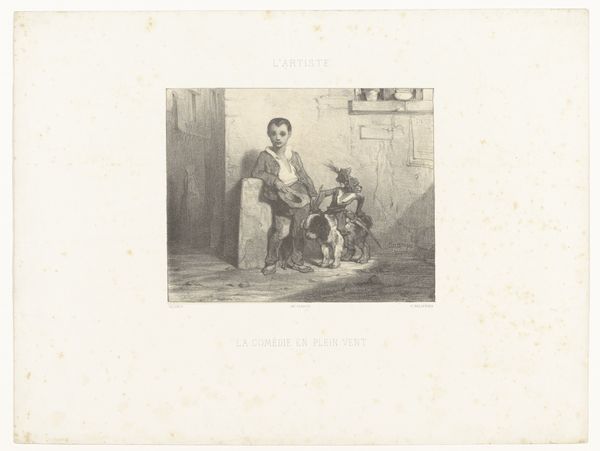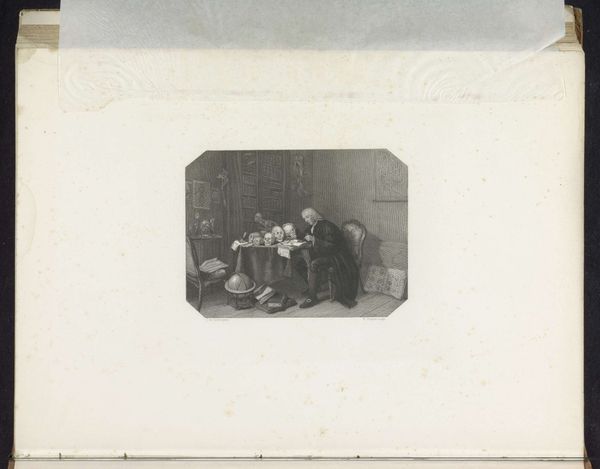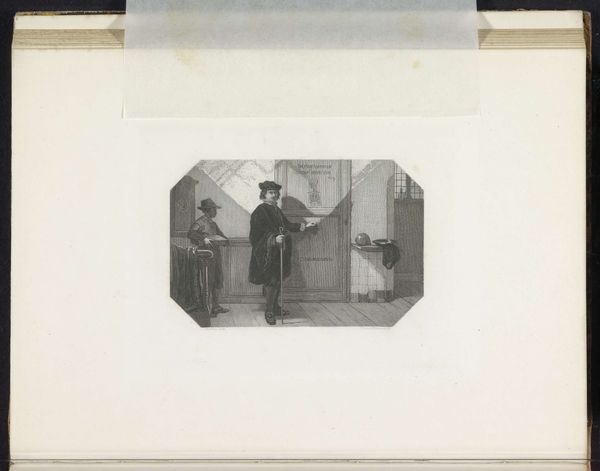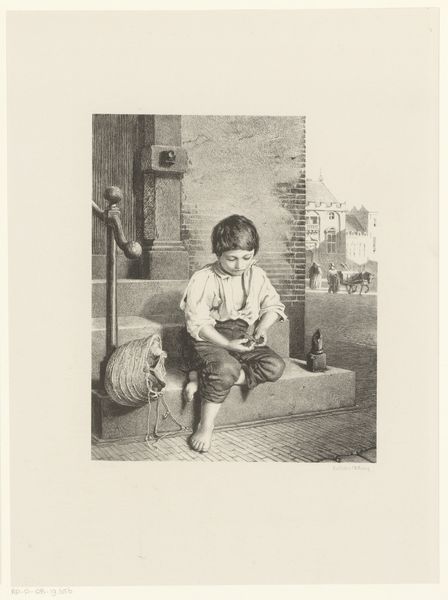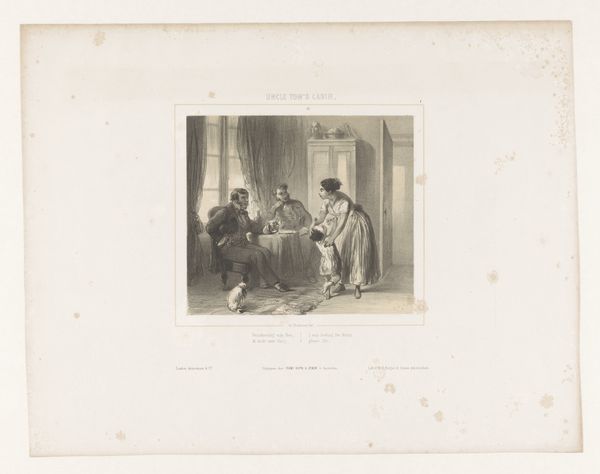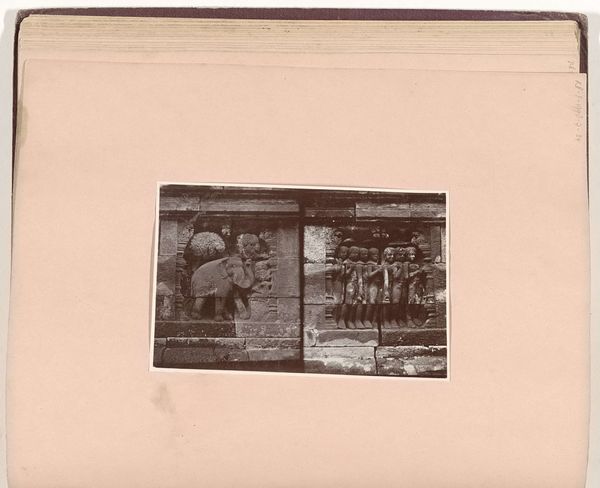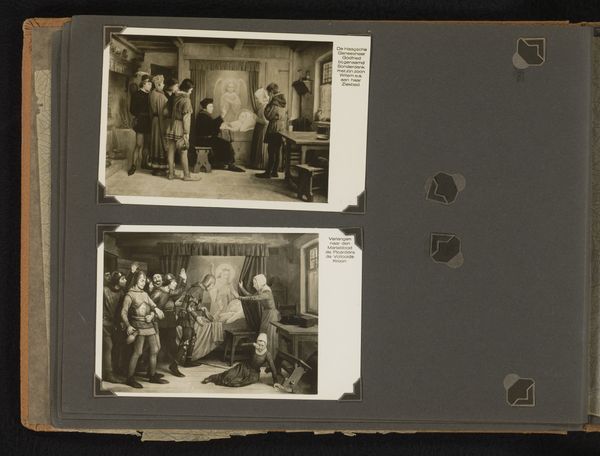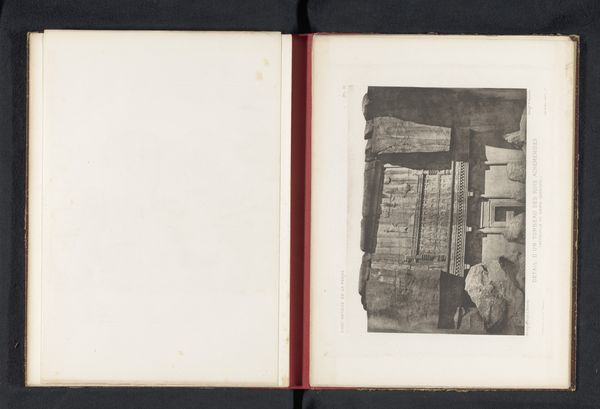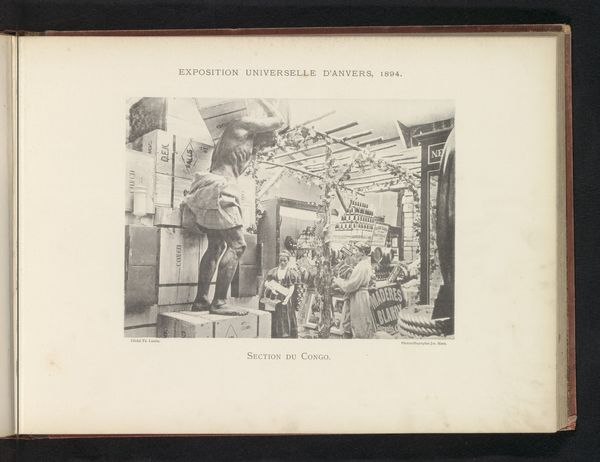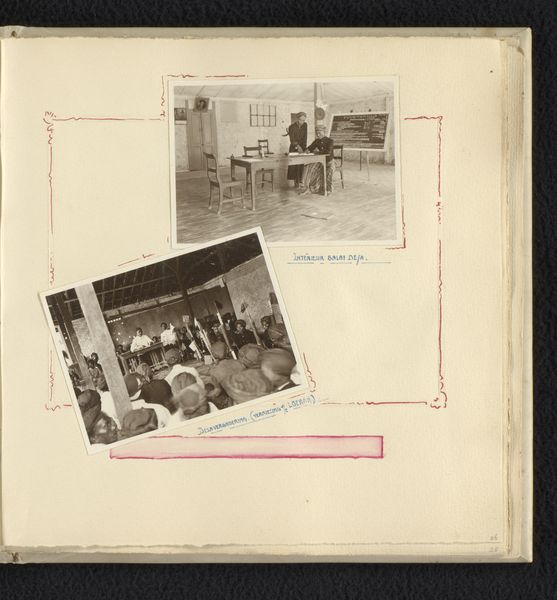
paper, photography
#
portrait
#
16_19th-century
#
paper
#
street-photography
#
photography
#
genre-painting
#
realism
Dimensions: 8.9 × 11.5 cm (image/paper); 27.1 × 20.9 cm (mount)
Copyright: Public Domain
Editor: So, this is "The Dramatic Shoe-Black," a photograph from 1877 by John Thomson, printed on paper. I’m struck by how it feels like a scene from a play, almost theatrical, even though it’s a slice of everyday life. What do you see in this image that stands out, especially considering the title? Curator: The title itself is a deliberate wink, isn’t it? It invites us to consider the ‘performance’ of daily life. Notice the arrangement of figures, almost as if posed on a stage. The symbols are subtle but powerful. The shoe-black, a child, is the central figure, small yet essential, perhaps representing the overlooked labor that keeps the wheels of society turning. And then we have the 'audience', who observe, embodying power and social hierarchy. Editor: That's fascinating. I hadn't really considered the child as being representative of wider societal issues, but rather saw them as the focus for some narrative being performed here. Is there anything in the visual elements that gives emphasis to the symbolic narrative of inequality? Curator: Precisely! Think about the bars of the gate in the background. Do they represent physical or perhaps societal constraints? They almost function as a proscenium, framing the drama. And consider the gazes—who looks at whom, and what does that suggest about power dynamics? These visual cues contribute to the photograph's potent, symbolic charge. Editor: This has changed how I see the picture entirely. The framing within the frame adds so much! Thanks for clarifying how visual languages operate. Curator: Indeed. Photography from this time is always so revealing of how we perceived our own cultural structures and aspirations. We can never assume what seems ‘natural’ in a work of art is not contrived to communicate a system of values. Editor: It is interesting how the composition of this photograph shows the values, conscious or unconscious, of its cultural context.
Comments
No comments
Be the first to comment and join the conversation on the ultimate creative platform.
